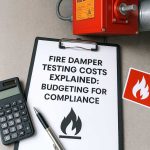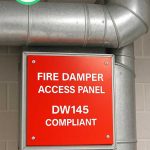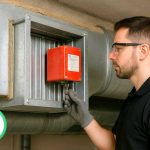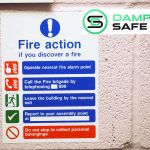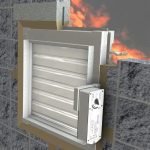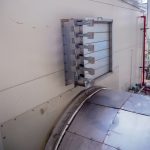Fire Damper Compliance Myths That Could Put Your Building at Risk
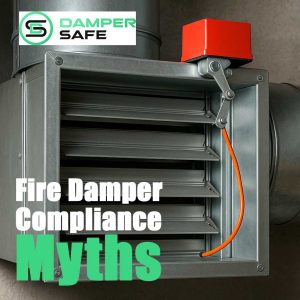 Ensuring fire damper compliance is non-negotiable—but myths and misconceptions can put your building, occupants, and reputation at risk. Let’s bust these myths and set the record straight.
Ensuring fire damper compliance is non-negotiable—but myths and misconceptions can put your building, occupants, and reputation at risk. Let’s bust these myths and set the record straight.
Myth 1: “My building is new, so fire damper compliance isn’t needed yet.”
Fact: The moment a fire damper is installed, it requires testing and certification under BS 9999 and related UK fire safety standards. New systems aren’t exempt—compliance starts from day one.
Myth 2: “Annual testing is optional, not mandatory.”
Fact: Regular testing is a legal requirement. In London and Kent (and across the UK), annual fire damper testing isn’t just best practice—it’s mandatory for ongoing fire damper compliance, especially under the Building Safety Act and relevant legislation (Damper Safe offers this service routinely in both regions). For detailed guidance, see the official UK Government fire safety responsibilities page.
Myth 3: “A visual check counts as full fire damper compliance.”
Fact: Visual inspections are useful, but they can’t verify operational readiness. True fire damper compliance demands physical testing to ensure the mechanism functions correctly under real conditions, not just that it looks intact.
Myth 4: “Only hospitals or high-risk buildings need to worry about fire damper compliance.”
Fact: Fire damper systems are essential across all building types—offices, retail spaces, schools, and more. From healthcare to education, fire damper compliance remains critical. Check out our article on [Duct and Damper Compliance for Schools Facilities in the UK] for more detail.
Myth 5: “If it passed last year’s test, it’s safe this year.”
Fact: Fire dampers degrade over time due to dust, corrosion, or wear. One test does not guarantee future compliance. Regular fire damper compliance checks catch changes and issues before they become hazards.
Myth 6: “Record-keeping isn’t part of compliance.”
Fact: Documentation is a key pillar of damper compliance. You must keep test results, dates, and certifications to prove your system meets regulatory requirements. Missing records can mean non-compliance—even if the dampers are in perfect condition.
Why These Myths Matter
Believing myths about damper compliance isn’t just risky—it’s dangerous. Misconceptions can lead to accidents, non-compliance, penalties, and compromised occupant safety.
Real-World Example
A facility manager in London assumed that new dampers were exempt from testing. When an inspection occurred, untested dampers failed to close properly—highlighting a compliance gap that could have had serious consequences.
Quick Myth-Busting Recap
| Myth | Reality |
|---|---|
| New buildings don’t need testing | Testing starts on installation |
| Annual testing is optional | Legally required for compliance |
| Visual checks are sufficient | Physical testing is essential |
| Only hospitals need dampers checked | All buildings require it |
| Past testing ensures future safety | Dampers degrade and must be retested |
| Records aren’t important | Documentation is critical for proof |
Take Action for True Compliance
- Schedule annual physical fire damper tests with a trusted provider like Damper Safe.
- Keep thorough test records; ensure clarity and accessibility.
- Re-test after any system modification—or following failure.
- Share this myth-busting guide with your FM or safety team.
Looking for More Resources?
- [Top 5 Fire Damper Installation Mistakes and How to Avoid Them] — Avoid common installation pitfalls that compromise fire damper compliance.
- [Understanding DW145 Fire Damper Standard] — Explore technical standards to deepen your compliance knowledge.
Stay informed. Stay safe. Ensuring consistent fire damper testing is how you protect both property and people.


